mostly neutral to beneficial; feeds on nematodes and small arthropods in nests; one species may be harmful, hindering bees' movements by dispersing on bees in large numbers
Macrocheles Latreille, 1829
Superorder Parasitiformes » Order Mesostigmata » Suborder Monogynaspida » Hyporder Dermanyssiae » Family Macrochelidae » Genus Macrocheles
Acarus marginatus Hermann, 1804 (=Acarus muscae domesticae Scopoli, 1772) by subsequent designation.
house fly mite, referring to the most common and cosmopolitan species, Macrocheles muscaedomesticae, which usually disperses on flies.
Female: With accessory scleritessclerite:
A component section of an exoskeleton; a plate forming the skeleton of an arthropod.
beneath lateral margins of epigynal shieldepigynal shield:
A shield protecting the female genital opening. Well-developed in Mesostigmata. Also known as epigynial shield.
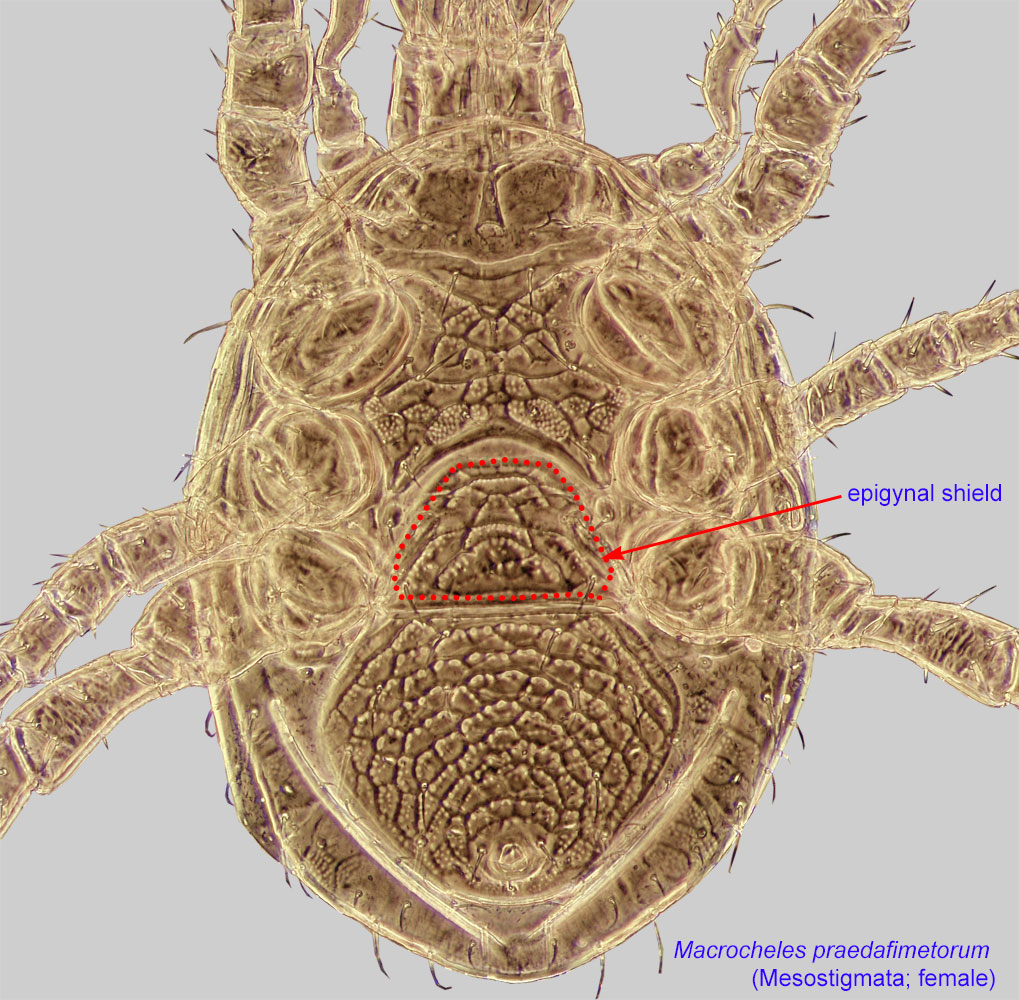 (Fig. 2). Peritremeperitreme:
(Fig. 2). Peritremeperitreme:
Paired, tubular, elaborated extensions of a tracheal system associated with stigmatic openings. Can be chambered, arch-like, and situated on the bases of chelicerae as in Cheyletidae (Prostigmata) or, in Mesostigmata, linear and situated on the lateral sides of the body.
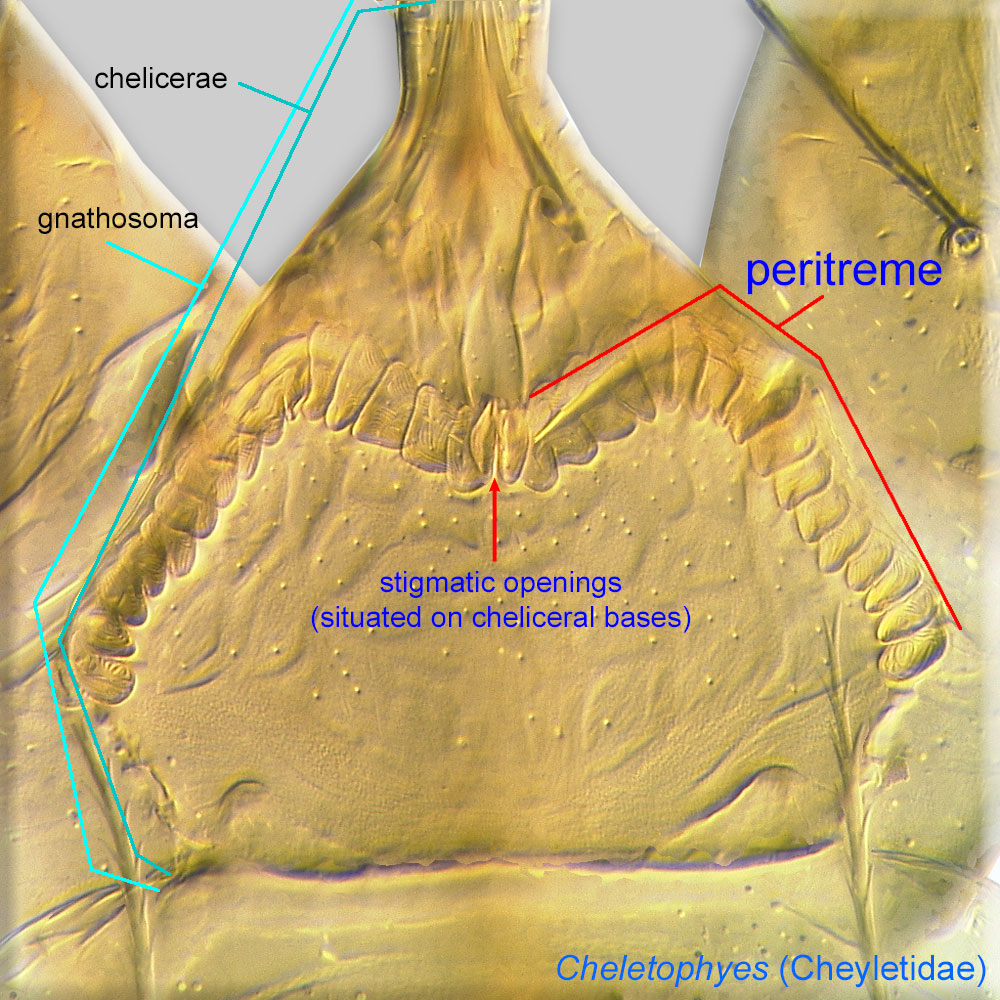 looped proximally, joining the stigma posteriorly (Fig 6). Well-developed arthrodial brushesarthrodial brush:
looped proximally, joining the stigma posteriorly (Fig 6). Well-developed arthrodial brushesarthrodial brush:
A brush-like extension of the arthrodial membrane at the articulation of the movable and fixed digits of the chelicera in some Mesostigmata. Not to be confused with cheliceral excrescences that are produced from openings in the movable digit.
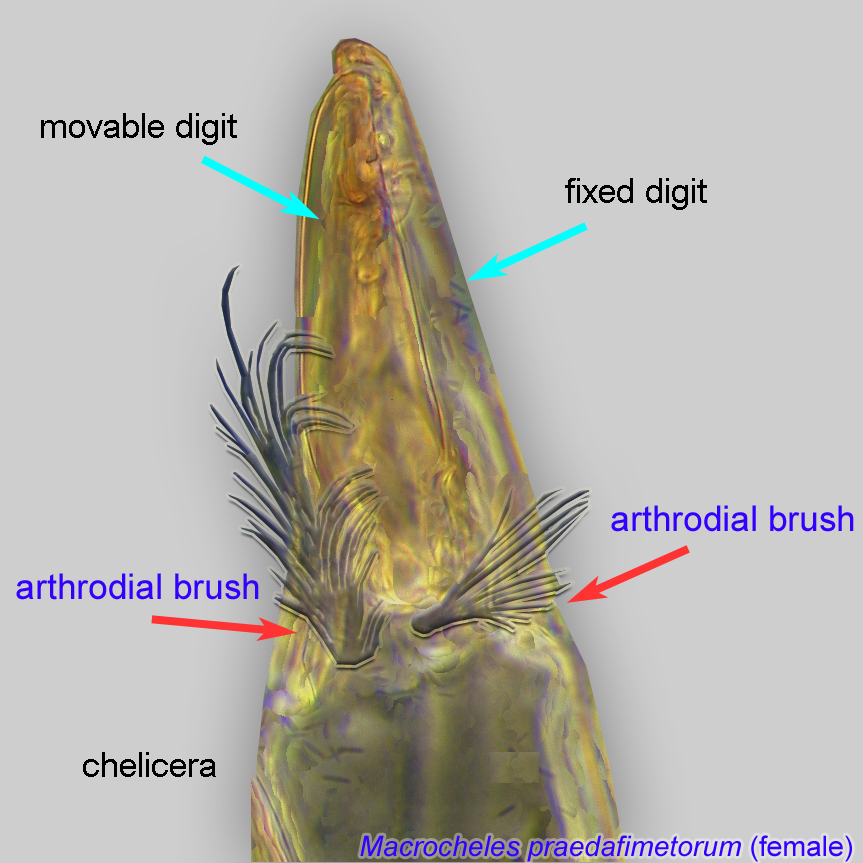 present on cheliceraechelicera:
present on cheliceraechelicera:
Anterior, paired appendage of the body. Primary organ for food acquisition, adapted for chewing, piercing, tearing, sucking, or filtering.
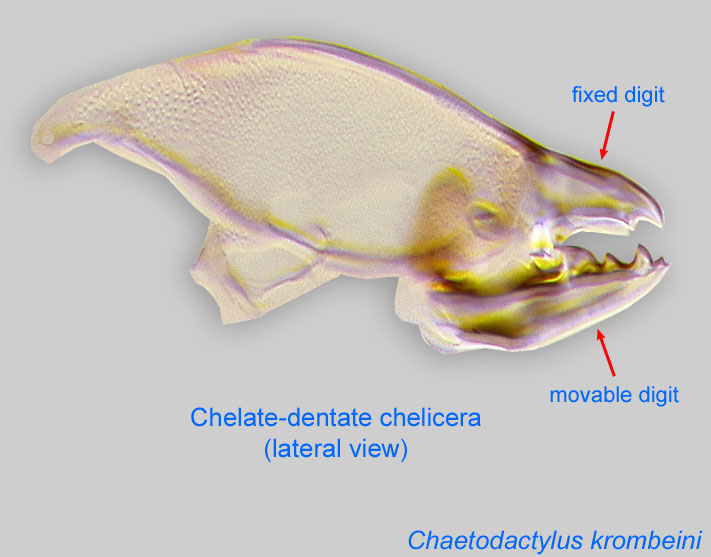 (Fig. 7). Claws and ambulacraambulacrum:
(Fig. 7). Claws and ambulacraambulacrum:
The claws and empodium of the apotele or pretarsus.
on leg I absent but present on tarsitarsus:
Terminal segment (also known as podomere or palpomere) of legs or palps. In Parasitoformes it can be subdivided into telotarsus and basitarsus.
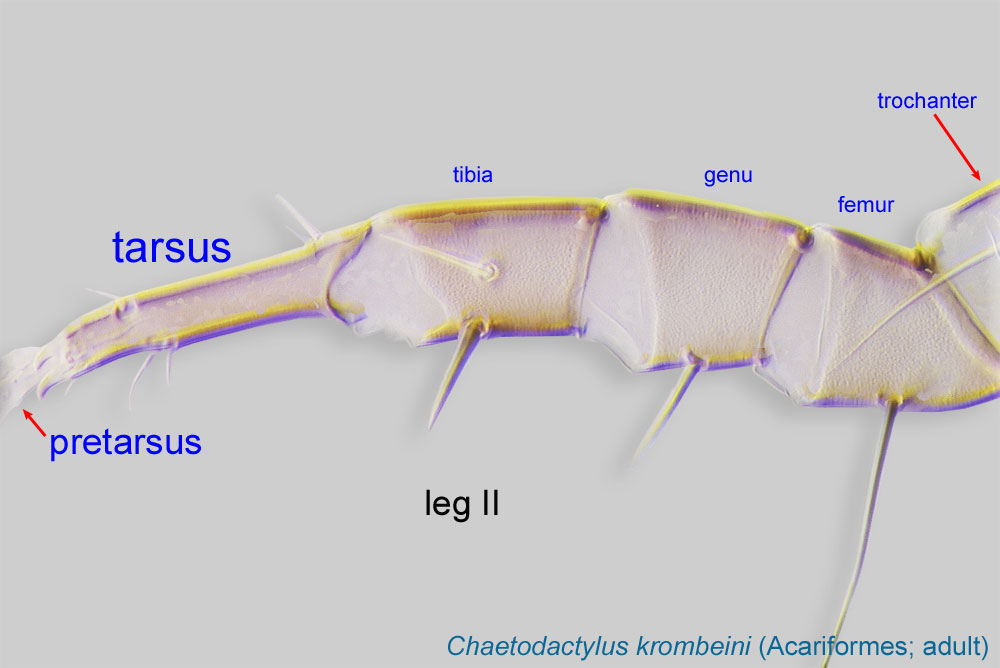 II-IV (Figs. 1, 2). 2-3 pairs of opisthonotalopisthonotal:
II-IV (Figs. 1, 2). 2-3 pairs of opisthonotalopisthonotal:
Pertaining to dorsal opisthosoma.
dorsocentral setae (J2, J5 or J1,J3, J5) (Fig 3). Sternal shieldsternal shield:
A shield in the anterior intercoxal region of parasitiform mites that bears one or more pairs of sternal setae.
 without strongly raised reticulate ornamentation and not strongly enclosing genital shield (Fig. 5). Ventrianal shieldventrianal shield:
without strongly raised reticulate ornamentation and not strongly enclosing genital shield (Fig. 5). Ventrianal shieldventrianal shield:
In Mesostigmata, a ventral shield bearing the anal opening, circumanal (postanal and adanal) setae, and one or more pairs of ventral setae or pores (lyrifissures) (see anal shield); may be narrow or very broad and covering most of the gaster.
 with 3 pairs of setae (JV1, ZV2-3) plus 3 circumanal setae (Figs. 2, 4).
with 3 pairs of setae (JV1, ZV2-3) plus 3 circumanal setae (Figs. 2, 4).
This is a species-rich genus that includes 15 bee-associated species. Dichotomous keys are not available. Keys to Palaearctic species (Karg, 1971Karg, 1971:
Karg, W. 1971. Acari (Acarina), Milben. Unterordnung Anactinochaeta (Parasitiformes). Die freilebenden Gamasina (Gamasides), Raubmilben. Die Tierwelt Deutschlands. 59. 475 pp.; Bregetova, 1977dBregetova, 1977d:
Bregetova, N. G. 1977d. [Family Macrochelidae]. Pp. 346-411 in M. S. Gilarov, and N. G. Bregetova, eds. [Opredelitel' obytayshchikh v pochve kleshchey Mesostigmata = Identification key to soil-inhabiting mites Mesostigmata]. Nauka, Leningrad.) can be used as a starting point. Other important works include papers on Macrocheles associated with bumble bees in North America (Richards and Richards, 1977Richards and Richards, 1977:
Richards, K. W. amp; L. A. Richards. 1977. A new species of Macrocheles (Acarina: Macrochelidae) found in bumble bee nests (Hymenoptera: Apidae). Canadian Entomologist 109: 711-719.) and Apis dorsata in Indonesia (Hartini et al., 2013).
In Glyptholaspis—three species of which have been found in beehives—dorsal shield strongly crenulate-reticulate and sternal shieldsternal shield:
A shield in the anterior intercoxal region of parasitiform mites that bears one or more pairs of sternal setae.
 extending posterolaterally around epigynial shield to the level of the posterior angles of coxaecoxa:
extending posterolaterally around epigynial shield to the level of the posterior angles of coxaecoxa:
In Parasitiformes, most basal leg segment (or podomere) forming a joint with the body. Areas delimited by coxal apodemes are called coxal fields in Astigmata or coxisternal plates in Prostigmata.
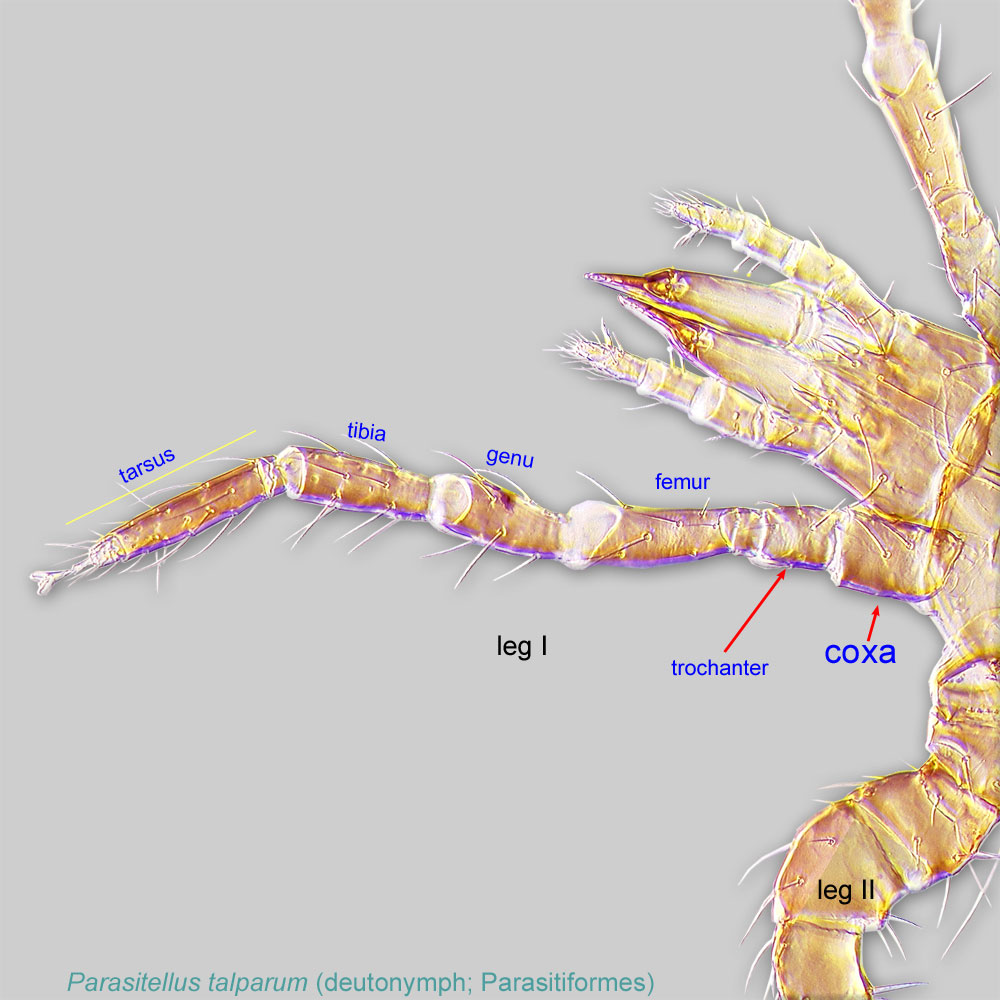 III and abutting rounded metasternal shieldsmetasternal shield:
III and abutting rounded metasternal shieldsmetasternal shield:
Small, usually teardrop to subtriangular paired shields bearing metasternal setae st4; sometimes fused to the sternal shield or the endopodal shields. Present in Mesostigmata.
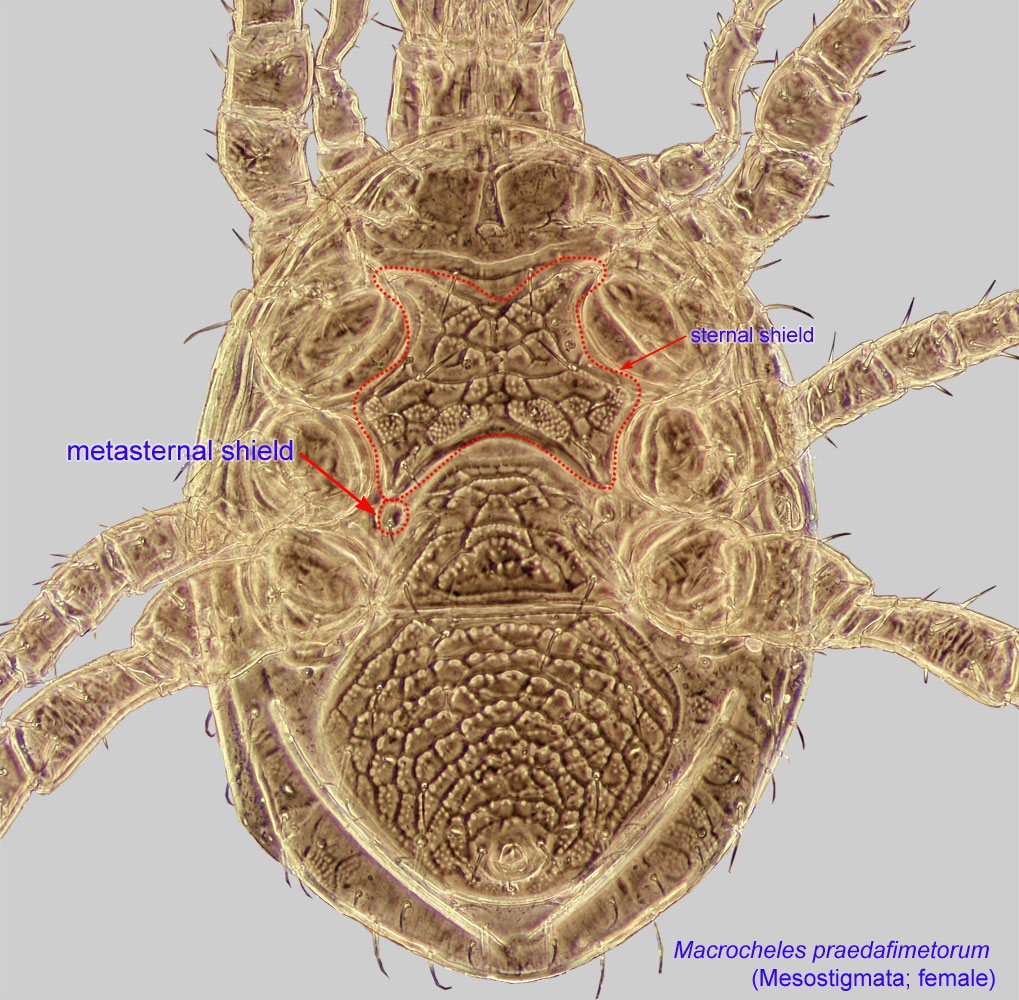 . In Macrocheles, dorsal shield smooth, punctate, reticulate, or areolate; sternal shieldsternal shield:
. In Macrocheles, dorsal shield smooth, punctate, reticulate, or areolate; sternal shieldsternal shield:
A shield in the anterior intercoxal region of parasitiform mites that bears one or more pairs of sternal setae.
 not extending posterolaterally to the level of the posterior angles of coxaecoxa:
not extending posterolaterally to the level of the posterior angles of coxaecoxa:
In Parasitiformes, most basal leg segment (or podomere) forming a joint with the body. Areas delimited by coxal apodemes are called coxal fields in Astigmata or coxisternal plates in Prostigmata.
 III; metasternal shieldsmetasternal shield:
III; metasternal shieldsmetasternal shield:
Small, usually teardrop to subtriangular paired shields bearing metasternal setae st4; sometimes fused to the sternal shield or the endopodal shields. Present in Mesostigmata.
 rounded or elongate, separated from, or abutting, posterolateral angles of sternal shieldsternal shield:
rounded or elongate, separated from, or abutting, posterolateral angles of sternal shieldsternal shield:
A shield in the anterior intercoxal region of parasitiform mites that bears one or more pairs of sternal setae.
 .
.
In addition, two other genera, Holostaspella and Neopodocinum, were recently found in nests of the giant honey bee, Apis dorsata (Hartini et al., 2013). Species in these genera are habitat generalists. They can be separated from Macrocheles using available keys in Krantz, 1962Krantz, 1962:
Krantz, G. W. 1962. A review of the genera of the family Macrochelidae Vitzthum 1930 (Acarina: Mesostigmata). Acarologia 4: 143-173..
Cosmopolitan. Species associated with bees have been collected in the Nearctic, Palaearctic, Neotropical, and Australian regions.
bumble bees (Bombus), honey bees (Apis), and a stingless bee, Melipona
Most generalist species are facultativefacultative:
can complete entire life cycle without bees or their close relative, wasps
.
Macrocheles praedafimetorum and M. rotundiscutis, species associated with bumble bees, are intermediate between facultativefacultative:
can complete entire life cycle without bees or their close relative, wasps
and permanentpermanent:
associated exclusively with bees or their close relative, wasps; cannot live without these hosts
.
Most species (habitat generalists)
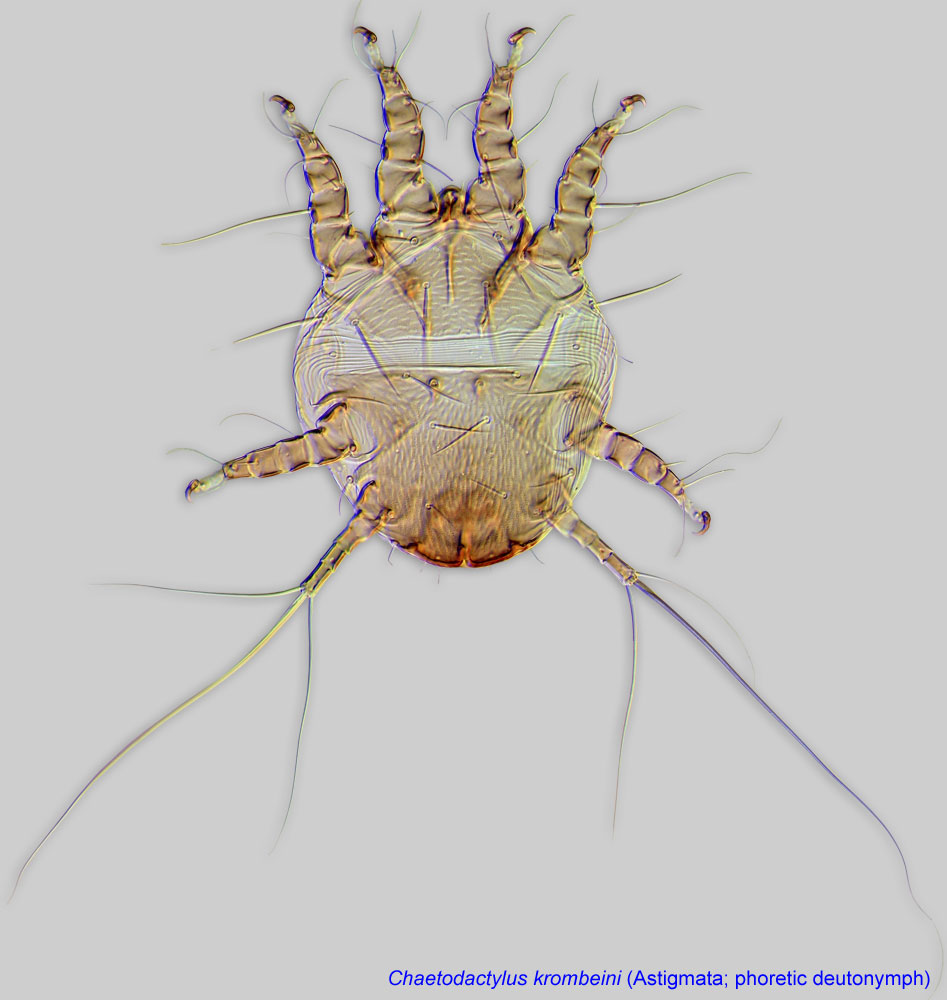 , disperse on adult insects, including bees.
, disperse on adult insects, including bees.Species associated with bumble bees (M. rotundiscutis and M. praedafimetorum)
Species of the genus Macrocheles are common predators of nematodes, oligochaetes, and the eggs and larvae of small insects and mites in a wide range of organic substrates, such as animal dung, hay, rotting stumps, galleries of bark beetles and subcorticalsubcortical:
Under tree bark.
situations, and nests or galleries of mammals, birds, and social insects, including bees (Bombus, Apis, and Melipona). These mites commonly form phoreticphoretic:
Pertaining to phoresy; using another organism (i.e., a host) for dispersal to new habitats. Phoresy can be distinguished from parasitism because feeding typically does not occur during phoresy.
associations with beetles and flies to colonize fresh substrates. Typically, only inseminated females disperse, although protonymphsprotonymph:
Ontogenetic stage between larva and deutonymph. See <a href="index.cfm?pageID=1720">Life stages page</a> for more details.
and deutonymphsdeutonymph:
Ontogenetic stage between protonymph and tritonymph (or adult, if tritonymph is absent). See <a href="index.cfm?pageID=1720">Life stages page</a> for more details. of the Macrocheles dimidiatus species group have also been found to be phoreticphoretic:
of the Macrocheles dimidiatus species group have also been found to be phoreticphoretic:
Pertaining to phoresy; using another organism (i.e., a host) for dispersal to new habitats. Phoresy can be distinguished from parasitism because feeding typically does not occur during phoresy.
.
Among mites found on bees and/or in their nests, there are two very similar species from bumble bees (Bombus spp.): Macrocheles rotundiscutis (=M. bombophilus) from Europe and Macrocheles praedafimetorum from North America. These species have a clear preference toward bumble bee nests, although they can be found in other habitats. In nests of bumble bees, the mites often reach large population sizes, feeding on a wide range of saprophagoussaprophagous:
Feeding on dead or decaying organic matter.
organisms common to dung and decaying matter, without any negative effect to the hosts. Cannibalism has also been recorded. It is interesting that dispersal does not occur on bumble bees, but on a dung-inhabiting beetle that is apparently attracted to bumble bee nests by the decaying material on the bottom of the domicile (Richards and Richards, 1977Richards and Richards, 1977:
Richards, K. W. amp; L. A. Richards. 1977. A new species of Macrocheles (Acarina: Macrochelidae) found in bumble bee nests (Hymenoptera: Apidae). Canadian Entomologist 109: 711-719.).
In contrast, species reported from hives of honey bees (Apis spp.) and other social bees are habitat generalists that can probably also use bees as transport (Chmielewski, 1991aChmielewski, 1991a:
Chmielewski, W. 1991a. Roztocze (Acarida) pszczoly miodnej ( Apis mellifera L.) w Polsce [Mites (Acarida) of honeybee ( Apis mellifera L.) in Poland]. Wiadomosci Parazytologiczne 37: 91-94.; Grobov, 1978Grobov, 1978:
Grobov, O. F. 1978. Kleshchi medonosnoy pchely ( Apis mellifera L.): ikh znachenie i osnovnue printsypy bor'by s kleschchevymi porazheniyami [=Mites of the honeybee ( Apis mellifera L.): their significance and main principles of control of diseases caused by mites]. Doctor of Sciences (Habilitation) Thesis. 536. Moscow: All-Union Institute of Experimental Veterinary, All-Union Academy of Agricultural Sciences.).
Because Macrocheles species may consume harmful microarthropods in bee nests, they can be beneficial to their hosts. Predation on the bee brood is unlikely. Macrocheles may be somewhat harmful if large numbers of mites disperse on a single adult bee. For example, a single adult bee may carry up to 30 females of M. glaber (Vitzthum, 1926Vitzthum, 1926:
Vitzthum, H. G. 1926. Acarapis-Studien. Archiv für bienenkunde; zeitschrift für bienenwissen und bienenwirtschaft 7: 293-313). In this relatively uncommon case, the bees' movements can be hampered (Homann, 1933Homann, 1933:
Homann, H. 1933. Die Milben in gesunden Bienenstöcken. Zeitschrift für Parasitenkunde 6: 350-415.).